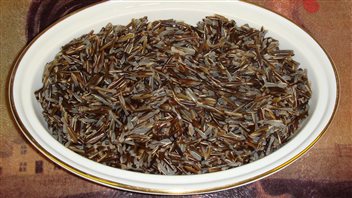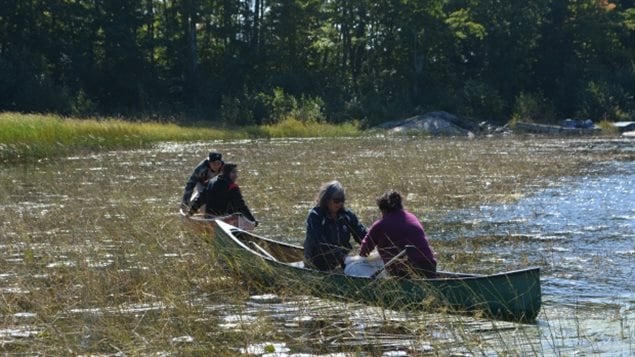Wild rice was once a critically important food source for aboriginal tribes from the southern parts of the province of Manitoba to parts of Quebec and in the US around the Great Lakes.

Five years ago the community of Wikwemikong on Manitoulin Island in Lake Superior began a wild rice restoration programme and began harvesting this fall.
Mary Ellen Kitchikake, the program facilitator says of the restoration and harvesting tradition, “We lost harvesting it, we lost the practice,” she said. “Some of our people lost the language. It’s the same thing.”
At least one elder of the community was very moved to see the practice re-established, recalling stories of how her great grandmother would harvest the rice.
They call in Mnoomin, manomin, or mahnomen, or other variations depending on the tribe, all of which mean something equivalent to “good berry”. Early European explorers were astounded at how aboriginals could remain strong throughout the harsh winter, and later found that it was due, certainly in part, to the nutritious grain which was easily stored and consumed all winter

In fact, it’s not rice at all but an aquatic plant. When European explorers saw the plants growing in shallow water the only thing they could equate it to was rice and so it became known as wild rice.
Harvesting consists of two people (usually women) in a canoe in the shallow water, while one paddles or poles in front, the other bends the grass over the canoe with a stick and with another, lightly flairs the stalks to shake the seeds into the boat. Harvesting occurred in late August through September.
Seeds gathered would be dried in the sun or over a slow fire to crack open the hulls. Then a ceremonial dance would be performed on the seeds to thresh them before being tossed in birch baskets in the breeze to separate seed from chaff.
Analysis shows wild rice to be higher in protein than Quinoa, and like rice, contains no gluten. One cup of cooked wild rice provides 5% or more of the daily value of thiamin, riboflavin, iron, and potassium; 10% or more of the daily value of niacin, b6, folate, magnesium, phosphorus; 15% of zinc; and over 20% of manganese.
While once prevalent around the edges of lakes and slow moving rivers, development, climate change, and variable water levels have changed the conditions that were favourable to the propagation of wild rice of 200 years ago. However, some commercial operations have begun and there are still many stands of wild rice across much of the country.
As for the aboriginal community of Wikwemikong, as they re-establish a eons old tradition, they will hold cooking workshops for the harvested rice, once considered almost sacred to many tribes whose survival often depended upon it.







For reasons beyond our control, and for an undetermined period of time, our comment section is now closed. However, our social networks remain open to your contributions.